If you have an aneurysm that is large or growing rapidly, you’ll probably need surgery. In addition, a leaking, tender or painful aneurysm requires treatment. There are two types of surgery for abdominal aortic aneurysms.
Our Service
AORTIC ANEURYSM REPAIR
An aortic aneurysm is an abnormal bulge that occurs in the wall of the major blood vessel (aorta) that carries blood from your heart to your body. Aortic aneurysms can occur anywhere in your aorta and may be tube-shaped (fusiform) or round (saccular).
Depending on the size and rate at which your abdominal aortic aneurysm is growing, treatment may vary from watchful waiting to emergency surgery. Once an abdominal aortic aneurysm is found, doctors will closely monitor it so that surgery can be planned if it’s necessary. Emergency surgery for a ruptured abdominal aortic aneurysm can be risky.
TYPES OF AORTIC ANEURYS f4
- Abdominal Aortic Aneurysm (AAA] – Involving the part of aorta in the abdominal cavity
- Thoracic Aortic Aneurysm (TAA]- Involving the part of aorta in the chest
- Thoraco-Abdominal Aortic Aneurysm (TAAA] – Involving parts of aorta in the chest as well as abdomen
WHO ARE AT A RISK OF HAVING AORTIC ANEURYSM f4?
Risk Factors:
- Old age (>60 years]
- Tobacco consumption —smoking or chewing (Any age group]
- Diabetes mellitus
- High blood pressure
- High blood cholesterol levels, obesity
WHAT ARE THE SIGNS AND SYNPTONS OF AORTIC ANEURYSM?
- Sudden, severe abdominal pain
- Severe back pain
- Feeling of swelling/heaviness in stomach
- Decreased hunger sensation/appetite
The diagnosis may be confused with renal stone. gastritis. hernia or lumbar spine disease.
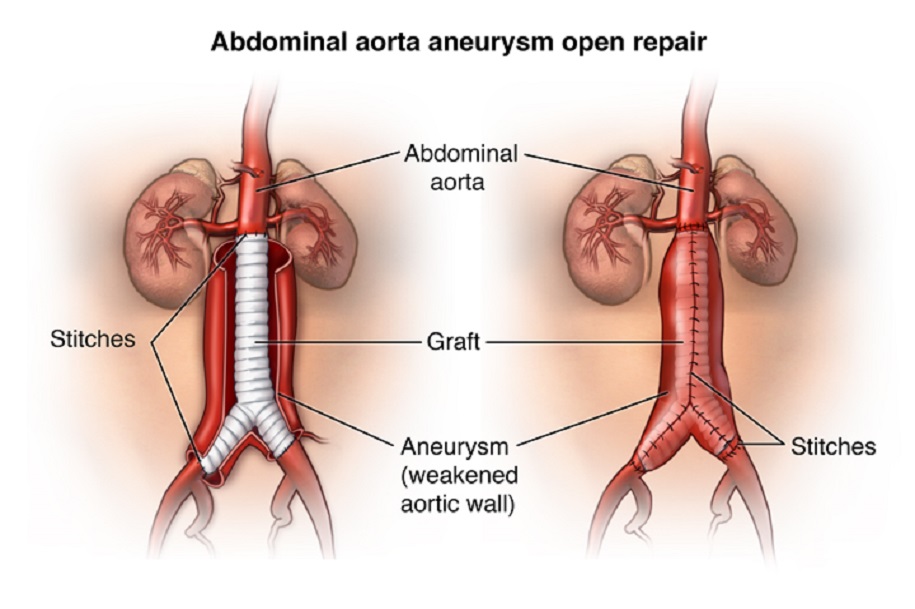
TREATMENT
Medical treatment: Patients with an aneurysm smaller than 5.5 cm in men and smaller than 5 cm in women are usually treated by medications and 6-monthly serial evaluation with CT scan. If the aneurysm is seen to be increasing in size, the patient is advised to undergo therapeutic intervention
Who needs urgent intervention?
- Aneurysm size larger than 5.5 cm in men and larper than 5 cm in women.
- Expanding aneurysm on serial CT scans
- Ruptured/impeding rupture of aneurysm
Abdominal aortic aneurysm repair
Open-abdominal surgery
Performed in patients not suitable for endovascular repair. Open surgery starts with the exposure of the dilated portion of the aorta via an incision in the abdomen or abdomen and chest, followed by the insertion of a synthetic graft (tube] to replace the diseased aorta. the graft is sewn in by hand to the non -diseased portions of the aorta and, finally, the aneurysmal sac is closed around the graft.
Recent advancement in terms of minimal invasive surgery and robotic surgery is also available at selected centers in the country.
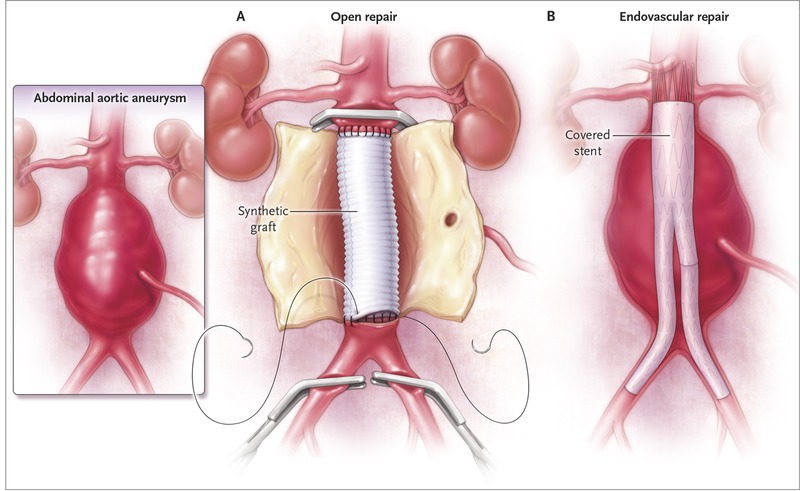
REPAIR OF RUPTURED AORTIC ANEURYSM
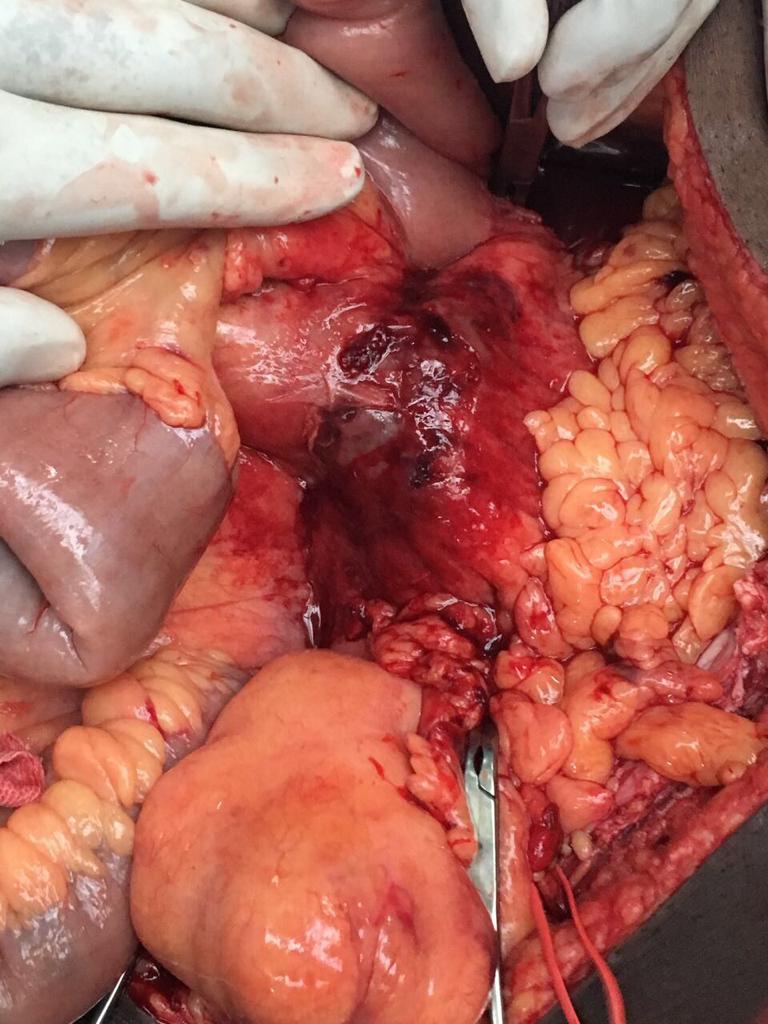
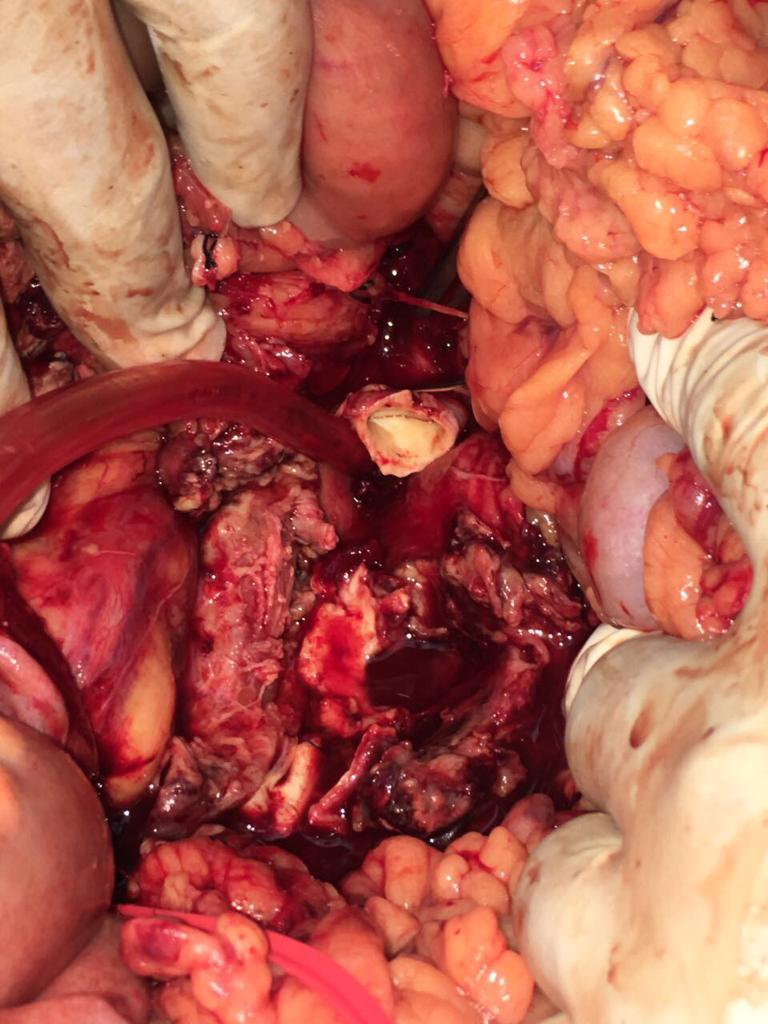
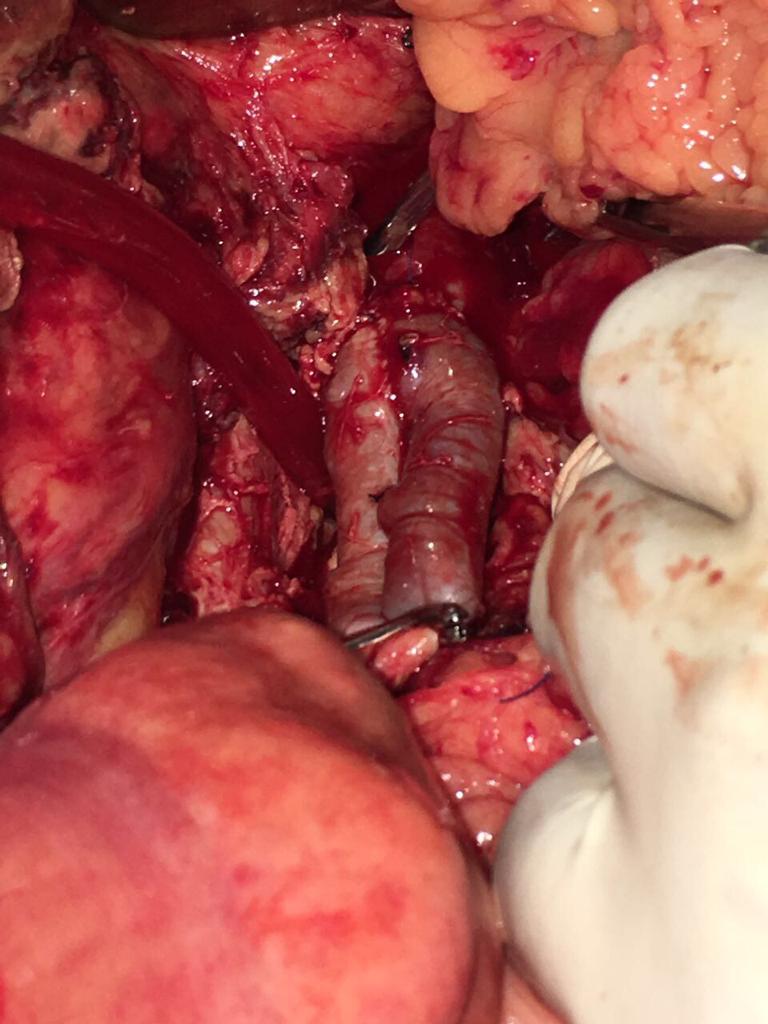
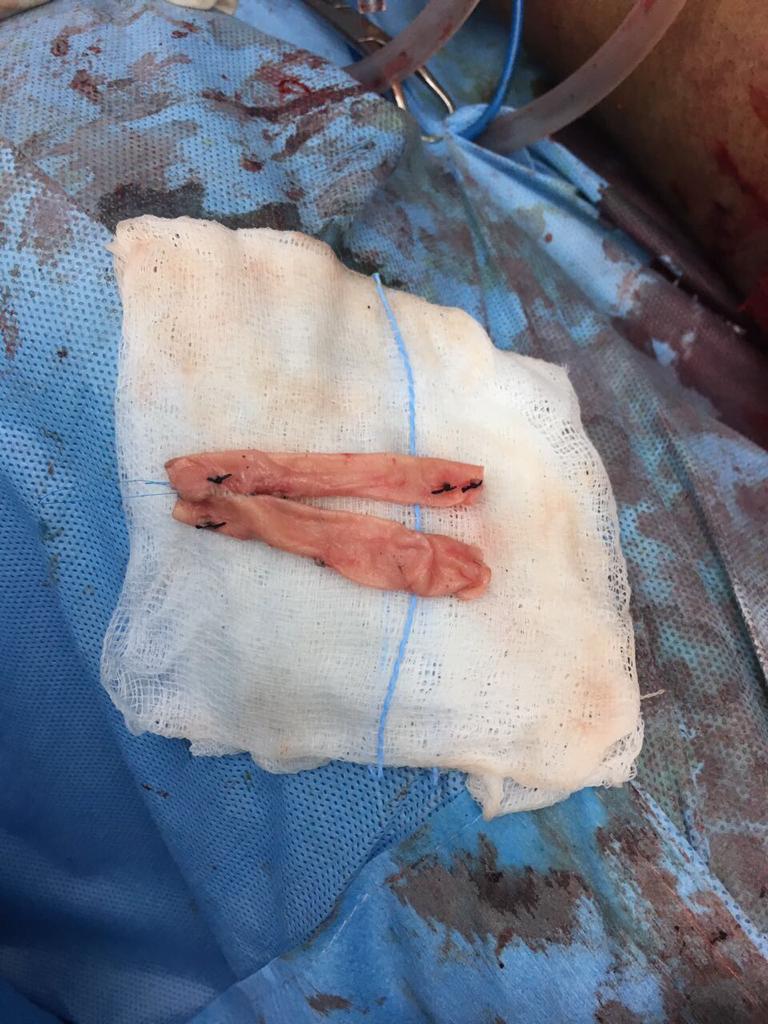

Endovascular surgery
Endovascular surgery is a less invasive procedure sometimes used to repair an aneurysm. Doctors attach a synthetic graft to the end of a thin tube (catheter) that’s inserted through an artery in your leg and threaded up into your aorta. The graft — a woven tube covered by a metal mesh support — is placed at the site of the aneurysm and fastened in place with small hooks or pins. The graft reinforces the weakened section of the aorta to prevent rupture of the aneurysm.
Recovery time for people who have endovascular surgery is shorter than for people who have open-abdominal surgery. However, follow-up appointments are more frequent because endovascular grafts can leak. Follow-up ultrasounds are generally done every six months for the first year, and then once a year after that. Long-term survival rates are similar for both endovascular surgery and open surgery.
The options for treatment of your aneurysm will depend on a variety of factors, including location of the aneurysm, your age, kidney function and other conditions that may increase your risk of surgery or endovascular repair.
